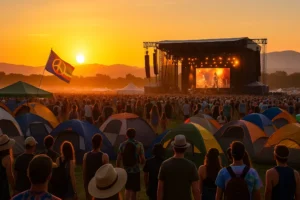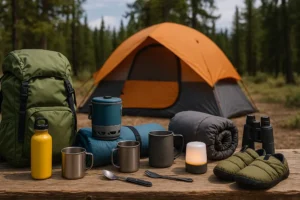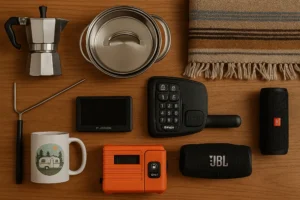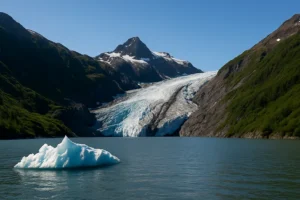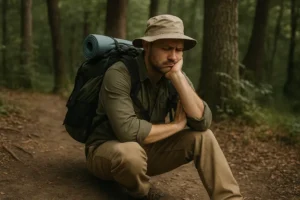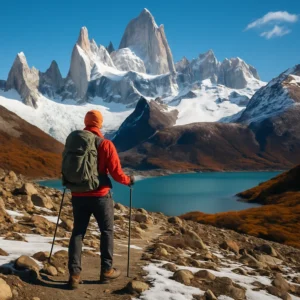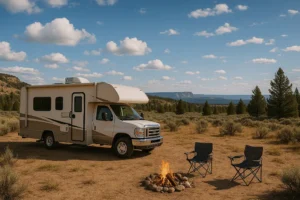Car camping essentials can make or break your outdoor experience. Forget one critical item, and suddenly that dreamy night under the stars becomes uncomfortable—or even unsafe. But bring the right gear, and you’ll find yourself enjoying nature with the comforts of home packed neatly in your trunk. That balance between the wild and the cozy is what makes car camping so addictive.
I’ve spent years dialing in my car camping kit, testing everything from bargain finds to high-end gadgets. In this guide, I’ll walk you through the must-have car camping essentials, share some practical tips, and help you feel fully prepared for your next trip.
What is Car Camping?
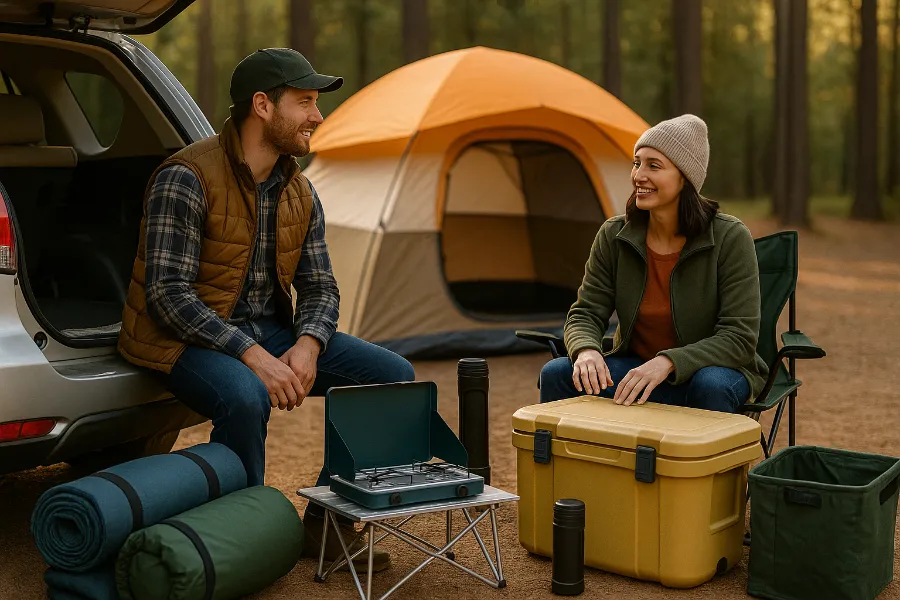
Car camping sits neatly between backpacking and RV camping. You don’t have the rolling luxury suite of an RV, but you aren’t sweating over every ounce of weight either. Instead, you pack your gear into your car, drive to your campsite, and set up your tent nearby.
The beauty of car camping is freedom. Want a thick air mattress? Pack it. Prefer lounging in a hammock instead of a tent? Toss it in. Unlike backpacking, where every ounce counts, car camping lets you bring the extras that transform a night outdoors into something close to glamping.
How to Choose a Car Camping Location
Private Campgrounds
If it’s your first time car camping, private campgrounds are a friendly starting point. They often offer water, bathrooms, and sometimes WiFi. They cost more, but they remove the uncertainty for beginners.
Public Campgrounds
Public lands—like state parks, national forests, and BLM areas—offer a more natural feel. Amenities vary: some have water and toilets, while others might only have a fire ring. They’re usually cheaper, too.
Dispersed/Boondocking
For the adventurous, dispersed camping means finding your own spot off the grid. No toilets, no water, no neighbors. Just you and nature. It requires more preparation, but the payoff is unmatched solitude.
The 5 Most Important Car Camping Essentials
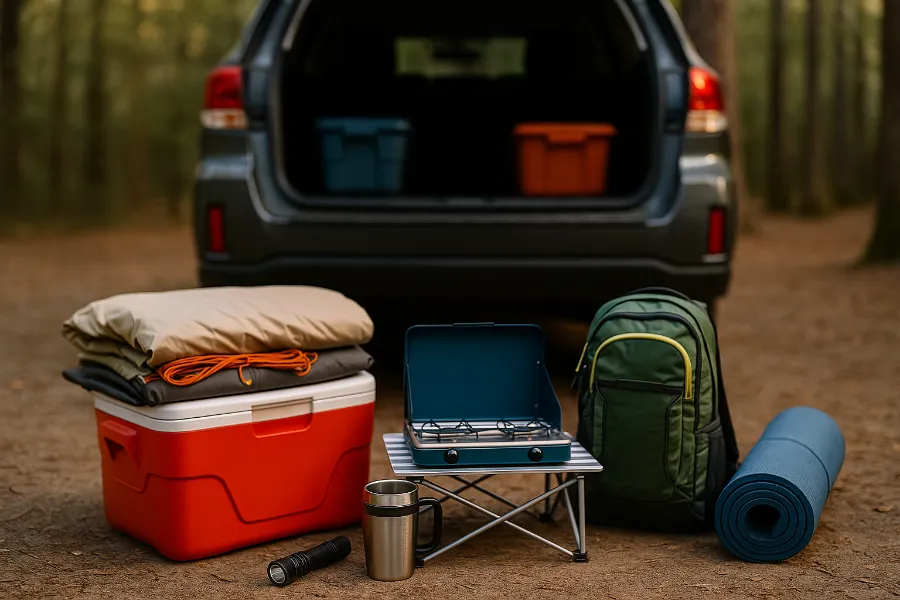
Whether you’re new to camping or a seasoned adventurer, there are five non-negotiable items:
Tent or Hammock
A tent gives you shelter from the elements, and with car camping, you can afford to go roomy. Look for one tall enough to stand in. Alternatively, a hammock with a bug net and rain tarp makes for a lightweight, cozy setup.
Sleeping Bag or Blankets
Synthetic sleeping bags are budget-friendly and quick-drying. If temps stay mild, a quilt or blanket from home can be enough. Check the temperature ratings to avoid cold, sleepless nights.
First Aid Kit
Cuts, scrapes, and burns are common around camp. A stocked first aid kit is essential, but just as important is knowing how to use what’s inside. A short first-aid course goes a long way.
Emergency Vehicle Kit
Your car is part of your campsite. A breakdown without service could turn dangerous. Keep jumper cables, water, snacks, a flashlight, and reflective markers in your kit.
Spare Tire
It’s not a matter of if but when. Flat tires happen, especially on rough roads to remote campsites. Make sure you have a spare and know how to change it.
Car Camping Sleep Essentials
Sleeping well outdoors is all about comfort.
- Mattress & Sleeping Pad: Go for a self-inflating pad or an air mattress. Add Reflectix under it for extra insulation.
- Pillows: Bring your pillow from home for maximum comfort, or pack a compact camping pillow if space is tight.
- Sleeping Liner: These lightweight add-ons boost warmth and keep your sleeping bag cleaner longer.
Clothing for Car Camping
The key is flexibility.
- Layering System: Pack a base layer, insulating layer (like a puffy jacket), and a waterproof shell. Even summer nights can get chilly.
- Footwear: Hiking boots for trails, sandals or Crocs for camp, and a pair of quick-dry socks for both.
- Weather Protection: A rain jacket and a sun hat should always be on your list.
Hygiene Essentials
Car camping gives you more options to stay fresh than backpacking, but you still need smart packing.
- Biodegradable soap for dishes and body.
- Quick-dry towels that won’t stay damp for days.
- Wet wipes and hand sanitizer for quick clean-ups.
- Sunscreen and deodorant—your tent mate will thank you.
- A small toiletry tote to organize it all.
Camp Kitchen Essentials
Food is half the fun of camping. Here’s what you need:
- Stove & Fuel: A propane two-burner stove is classic and easy. Bring extra fuel.
- Cookware & Utensils: Cast iron pans, camping pots, and durable utensils work best.
- Cooler & Storage: A quality cooler (like a Yeti) keeps food fresh for days.
- Coffee Setup: Whether it’s a French press, Aeropress, or instant packets, don’t skip your caffeine ritual.
- Water: Carry a few gallons or a collapsible jug, even if the site has water.
Campsite Gear
Turn your site into a home base.
- Headlamp, flashlight, and lanterns for safety and ambiance.
- String lights for a cozy touch.
- Camp chairs and a folding table for meals and lounging.
- A canopy for shade and bug protection.
Tools, Repair & Safety
Things break. Be ready.
- A multi-tool covers knives, scissors, and screwdrivers.
- Rope and duct tape fix just about anything.
- An axe or hatchet makes firewood prep easier.
- Pepper spray for peace of mind in both wildlife and human encounters.
Food & Water Essentials
Eating well is part of the joy.
- Prep meals at home when possible to simplify camp cooking.
- Pack fresh fruit, yogurt, or trail mix for snacks.
- Hydrate! Aim for at least a gallon of water per person per day, especially when cooking and cleaning.
Final Tips for Successful Car Camping
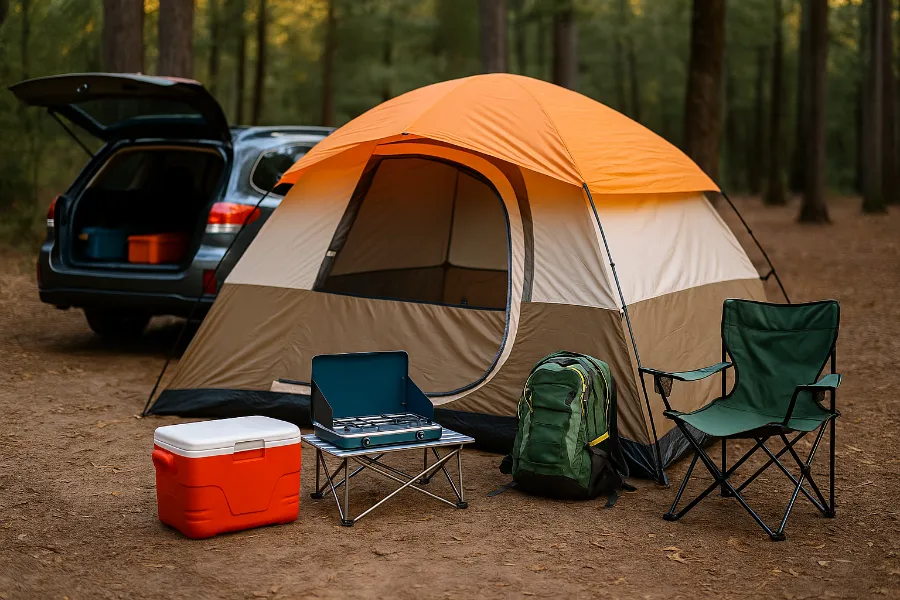
- Pack in bins or totes to keep gear organized.
- Test your gear before you go—especially your tent and stove.
- Follow Leave No Trace principles: clean up, respect wildlife, and minimize your impact.
- Start simple. Each trip will teach you what to add or leave behind.
Conclusion
Car camping essentials aren’t about buying every fancy gadget on the market. They’re about creating comfort, safety, and enjoyment outdoors. With the right setup, your car becomes a gateway to incredible adventures—where you wake up to birdsong, sip coffee by the fire, and fall asleep under the stars.
So load up, plan smart, and let the open road guide you to your next campsite. Adventure is waiting, and now you’re fully prepared.


